The Place des Vosges is one of those spots in Paris where you feel as though you can breathe that much more easily. It elicits a deep sigh of pleasure, perhaps because of the harmony of it all, the gracefulness of this serene marvel set within the Marais.
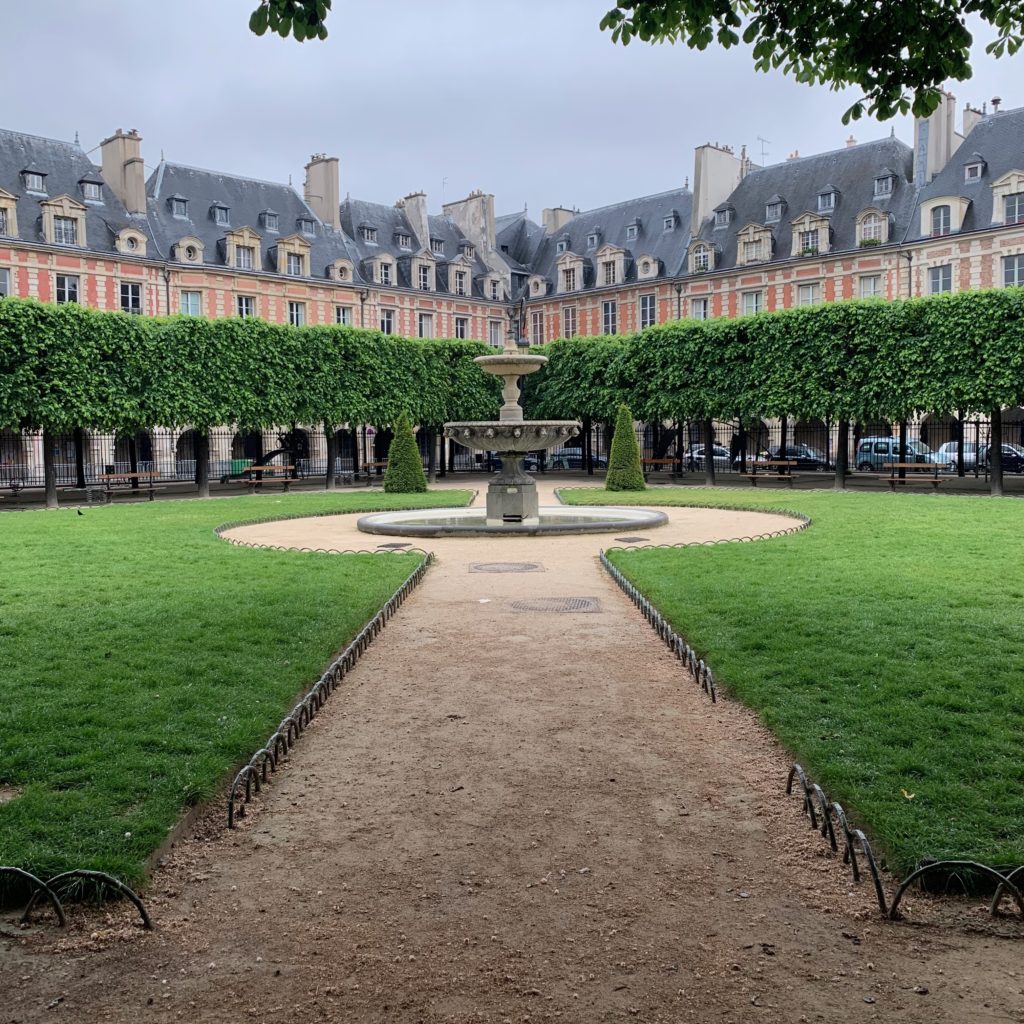
Dating from the beginning of the seventeenth century, the Place des Vosges was the city’s first Renaissance-type piazza, the vision of King Henri IV, just before he commissioned Place Dauphine. But unlike Place Dauphine, the Place des Vosges has maintained its original uniformity. Neatly lining the square are 36 — nine on each side — red-brick-and-white-stone townhouses (hôtels particuliers), all pertly topped with black-slate roofs that are studded with sweet little windows.
The red, white and black architecture took inspiration from the Renaissance’s ‘aux trois crayons’ craze, but also took a cue from the pretty brick-and-stone-chequered châteaux with jaunty black roofs that were being built throughout the Île-de-France region, making the square both modern but also a breath of fresh French country air.
Spend the morning criss-crossing the park, past the tinkling fountains, through the corridors of trimmed linden trees and around the central ring of horse chestnuts. (The equestrian statue in the midst honours Henri IV’s son, Louis XIII.) Sit on a bench seat here and then there; this square, symmetrical though it is, requires viewing from many angles, to fully appreciate the immensity of its gorgeousness.

Then wander around the perimeter, through the rhythmically vaulted arcades, with their calm cloister-like atmosphere.
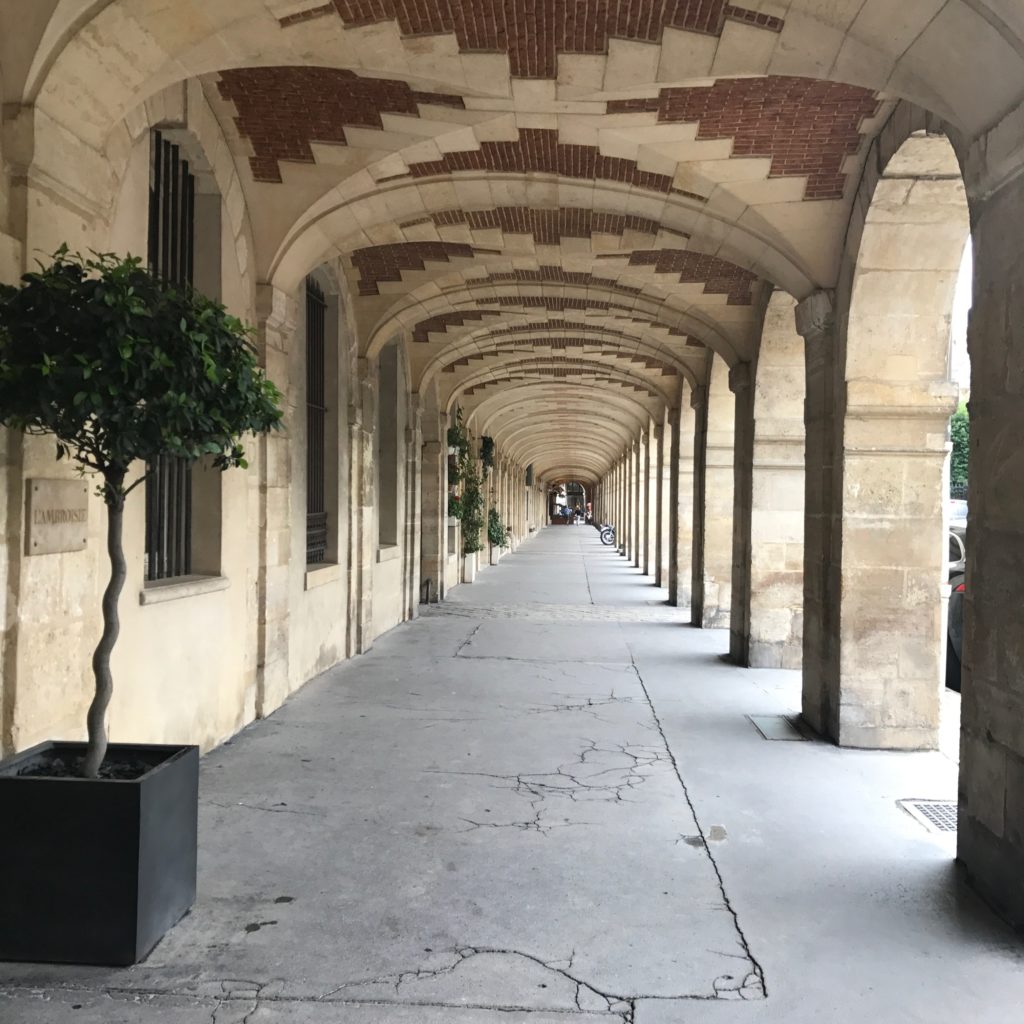
The arcades are slowly getting their bustle back. The square was originally designed to accommodate chic boutiques at the base of the noble townhouses above. For many years it was the best address in town, for both shopping and living in style. The occasional open coach door will give you a glimpse into this past, when carriages used to usher A-List residents — such as mathematician Émilie du Châtelet and actress Marion Delorme — into their luxurious private worlds.

But the Marais lost some of its lustre in the eighteenth century, when the Faubourg Saint-Germain became all the aristocratic rage. Then, of course, the Revolution completely stopped the party. The Marais was reborn as an industrial enclave, its grand mansions finding new life as tenement housing, artisan workshops and industrial factories.
Since the 1960s, when the State swooped in to save the decaying Marais, and its dilapidated one-time mansions, the district has experienced a new kind of renaissance, with boutiques and eateries filling in, and polishing up, the dusty old nooks and crannies. As you walk around Place des Vosges’ perimeter, scope the stores and galleries you want to check out later today.
And when you’re ready for breakfast, stop at Carette, on the square’s northern edge. Make sure to order the creamy chocolat chaud, one of Paris’s best, and a drink that has history on this very square …

As the district took off in the seventeenth century, chocolate drinks were becoming popular at court, thanks to a couple of Spanish queens who imported the craze from home (where cocoa had in turn been imported from Mexico). The fad then filtered to the salons of the Marais. One of that century’s most influential tastemakers, Madame de Sevigné, who was born on Place des Vosges, directly across from Carette, was a huge fan of chocolat chaud.
It will ‘make the most unpleasant company seem good to you,’ she insisted. Follow up your chocolate-charged breakfast with a few hours at the Musée Carnavalet, part set within a grand old hôtel particulier in which Madame de Sevigné herself once lived.
This rabbit’s hole of a museum will not only give you access into the types of grand townhouses that once graced the Marais, it will take you on a treasure hunt-like tour of the history of Paris, past an eclectic mix of wonders, from prehistoric canoes to medieval shop signs to recreated Rococo rooms, complete with walls of beautiful boiseries.

Within the picturesque parterre courtyards of the Carnavalet, you’ll currently find the pop-up restaurant Fabula; sit down and enjoy a lunch that is as delicious as your surroundings are delightful.
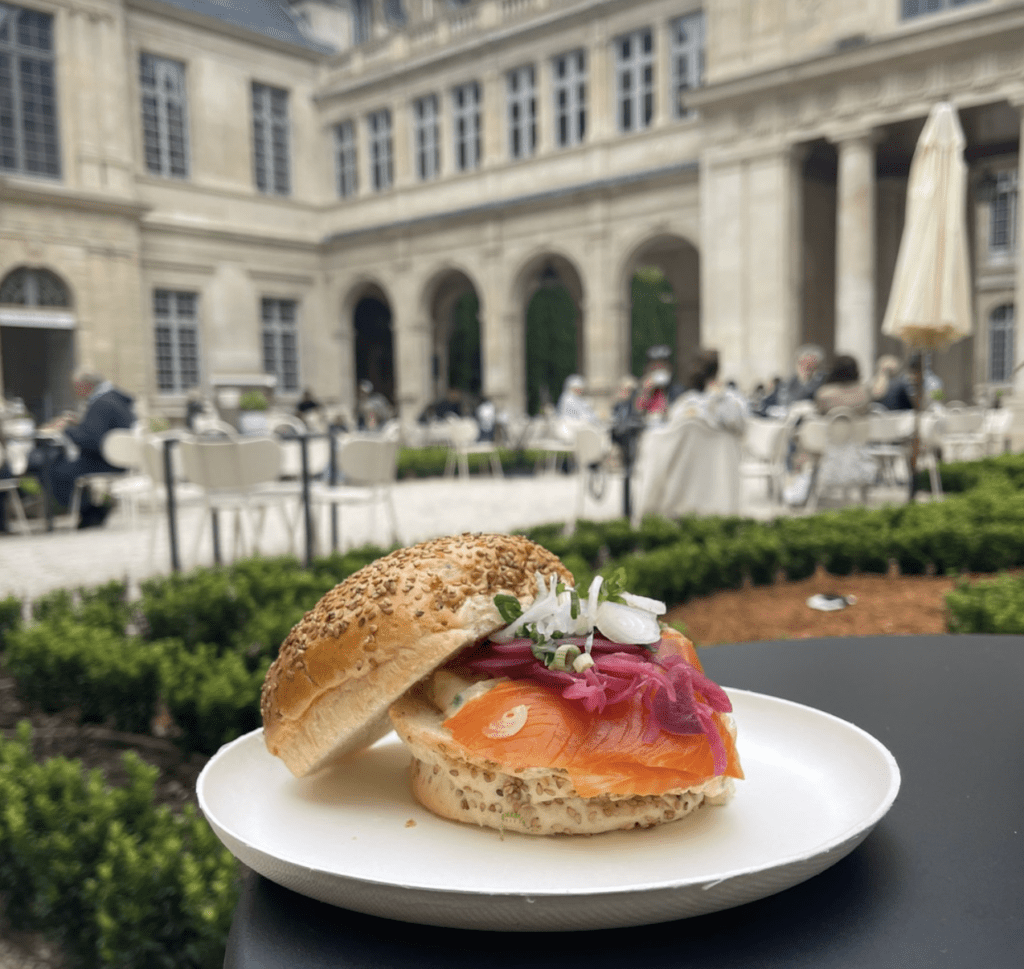
Afterwards, wander one block west to Musée Cognacq-Jay, a museum devoted to eighteenth-century taste, based on the art and décor collections of Ernest Cognacq and wife Marie-Louise Jay, the couple who launched La Samaritaine. Entry to the museum’s permanent collection is free, and even a quick whirl through will delight, for the Rococo designs in all shapes and sizes, from furniture of the Marquise de Pompadour’s dreams to bijou enamel-adorned snuff boxes, and powdery pastel paintings strung up throughout the boiserie-lined, chandelier-lit rooms. It’s also another great insight into the architecture of the Marais, given that this one-time mansion was built in 1575 — don’t miss the attic level, with its ship-like wooden beams.
Stroll back to Place des Vosges, and to number 11, the home-turned-museum of another old nostalgic, Victor Hugo. Hugo loved architecture and stones that told stories, as The Hunchback of Notre Dame proved, wary of modernity for modernity’s sake; and he furnished his interior world as he did his literary realm: with one eye joyously on the past. A visit to Maison de Victor Hugo is to appreciate his Romantic tastes, with the mix of Gothic glamour and Chinoiserie exotica, the clash of Flemish tapestries and Turkish rugs.
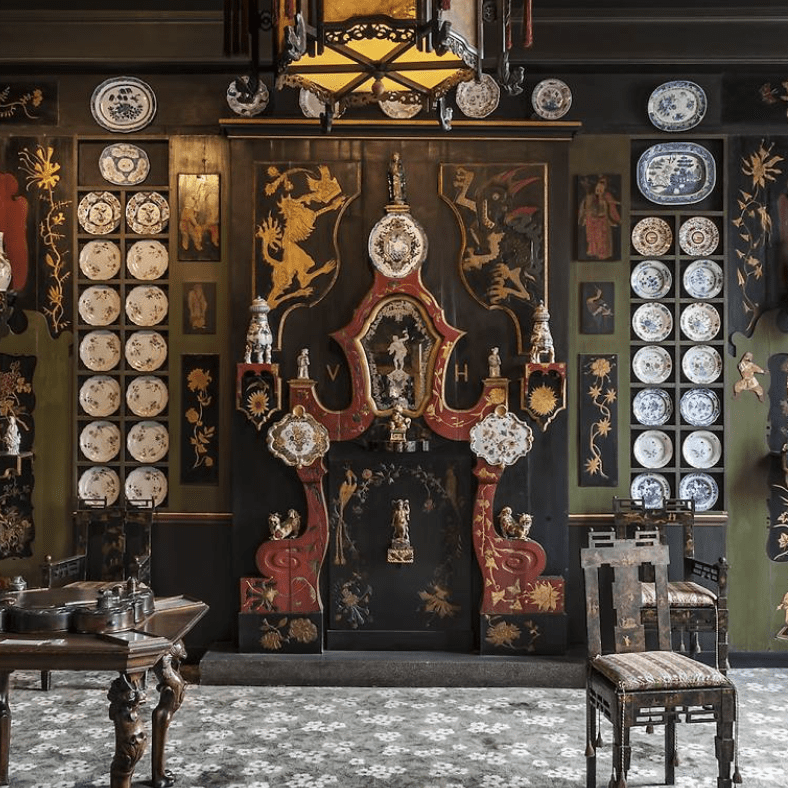
But Hugo also had his other eye very much on the present. It was here that he began to write Les Misérables, in 1845, after the revolutions of the 1830s had played out on his very doorstep. Henri IV might have envisioned Place des Vosges, originally open and paved, as a centre of urban sociability and public festivals, but the encouraging of Parisians of all walks of life could just as easily lead to violence. Perhaps this is one reason the park was added later in the nineteenth century.
The park, incidentally, is the perfect place for an afternoon-tea picnic. Buy yourself some takeaway treats from Café Mulot in the courtyard of the museum, and make your way over to the park, where you can laze on the lawn in the warmer months.
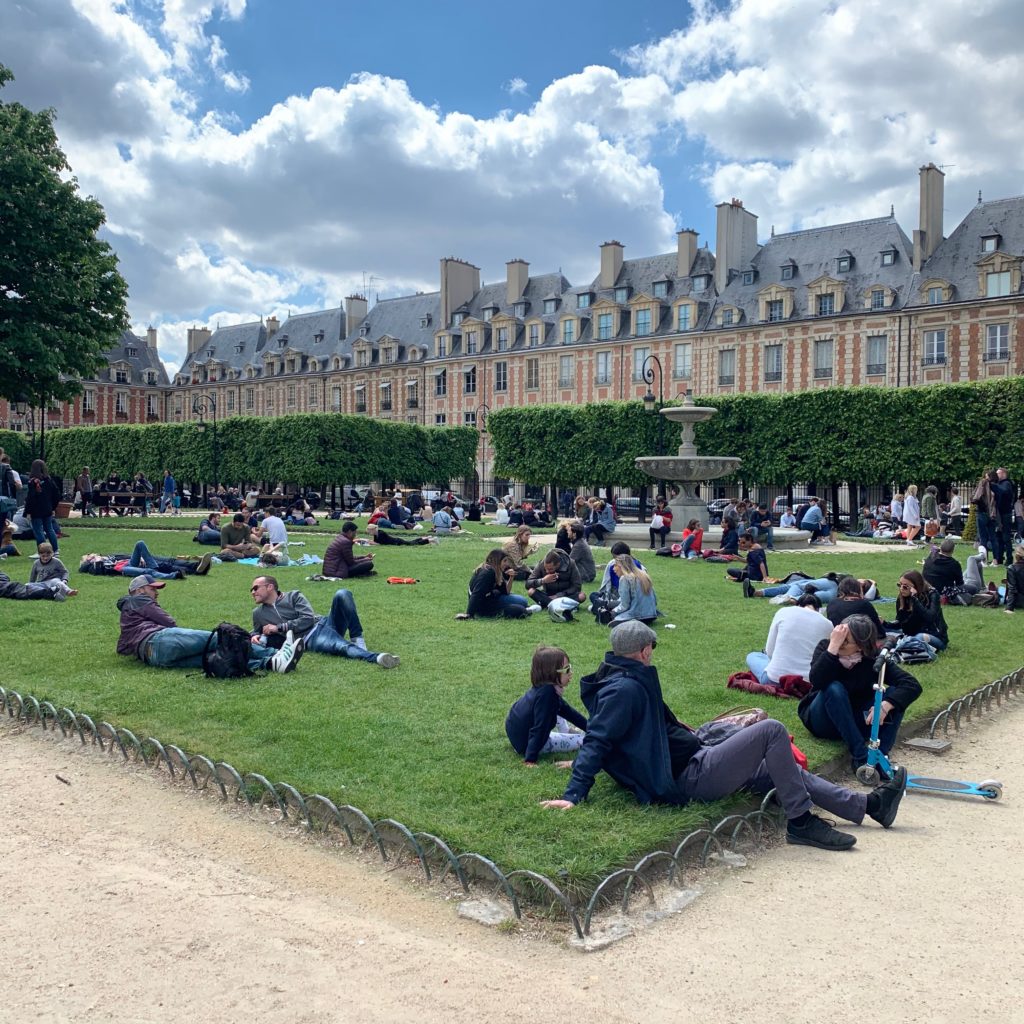
If you want an excuse to linger here for longer, find the door at the south-western corner of Place des Vosges’ arcades …

Ahead you’ll see the grand former mansion Hôtel de Sully, in which you’ll find one of the city’s best bookstores (open every day, 10am-7pm), specialising in the history and culture of Paris. Take your read back to the park, stopping on the way to admire Sully’s beautiful rear garden, with its old orangerie — the first such greenhouse to be built in Paris.

When you’re ready to get moving once more, double up your exercise with some further retail therapy. Weave your way around the blocks just to the west of Place des Vosges — streets such as Rue des Francs-Bourgeois, Rue de Sevigné, Rue Vielle-du-Temple — where you’ll find all the high-street chain stores, like Uniqlo, Sandro and Maje. Or, for something a little off the beaten path, both literally and stylistically speaking, trek ten minutes north to design and lifestyle boutique Merci (111 Boulevard Beaumarchais, 75003).
As apéro hour descends, head back to Place des Vosges, where Serpent à Plume, at number 24, mixes up a serious cocktail. If, however, you’re after a simple kir, the classic Ma Bourgogne, at number 19, is your go-to, and you might as well stay for the dinner, soaking up the country cooking as much as the convivial atmosphere and old-school décor.
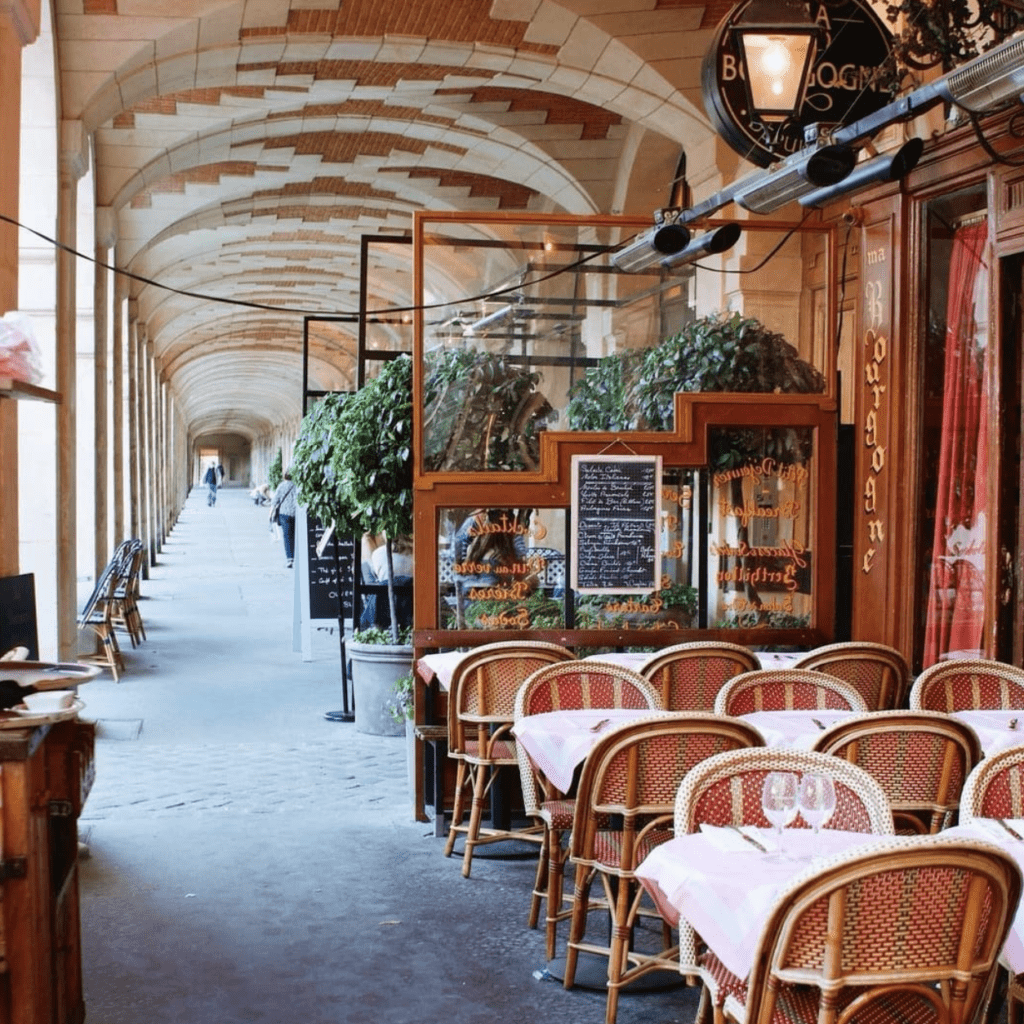
Walk off your dinner with another stroll around the cool stone arcades and tree-lined walkways of Place des Vosges. It has a gravitational pull to it, this lovely, enchanting square, and if you’re lucky, you won’t need to leave just yet, because you’ll be staying at one of the glamorous hotels that call this place home: Pavillon de la Reine and Cour des Vosges.

